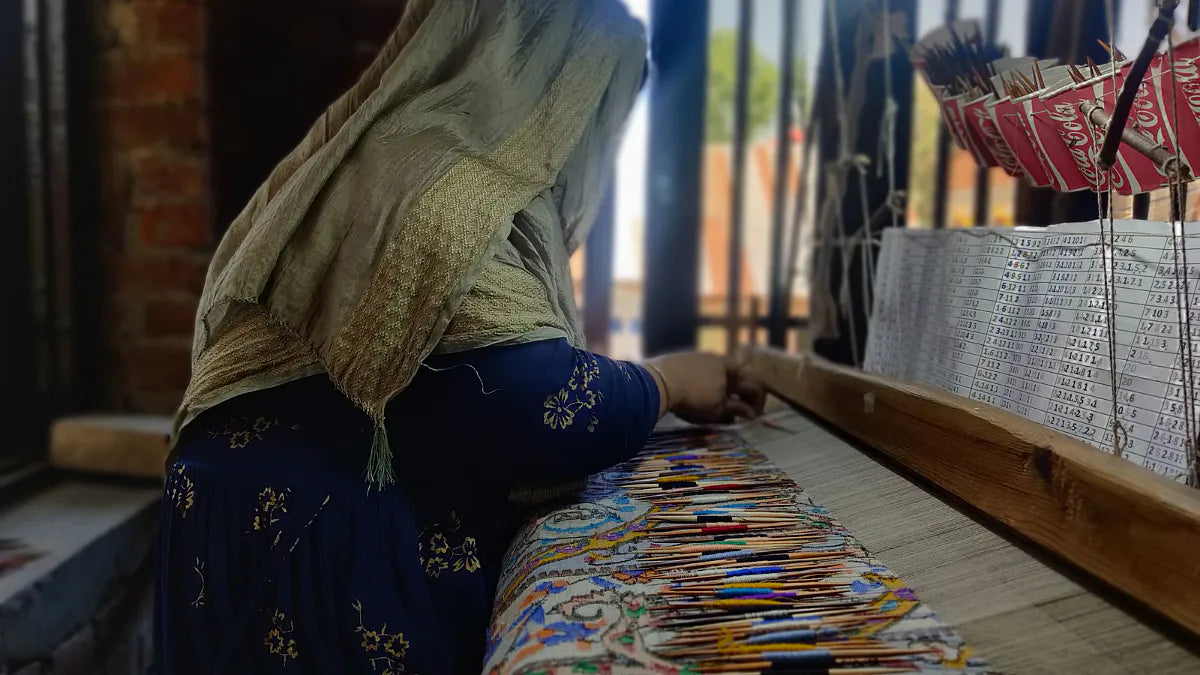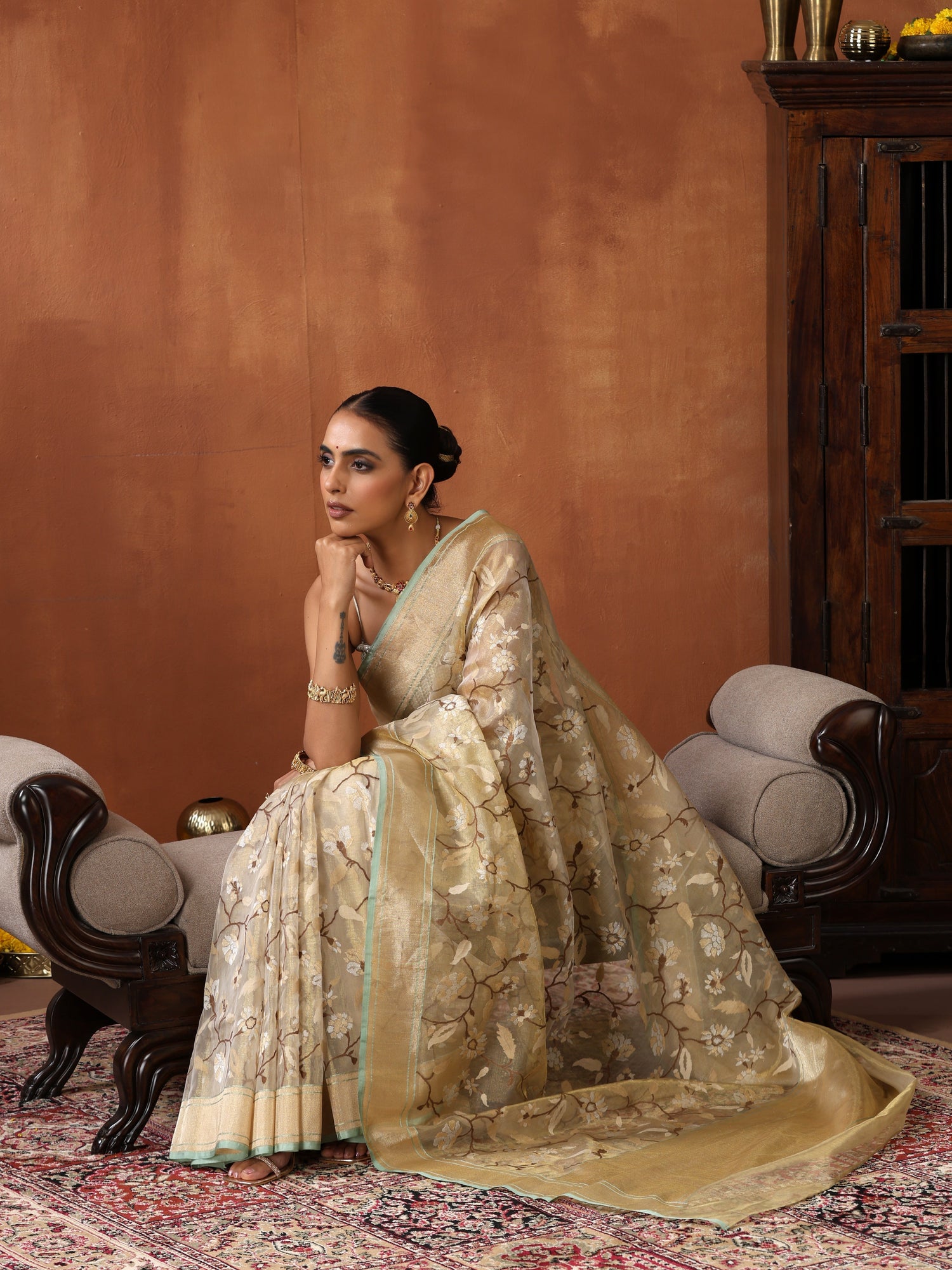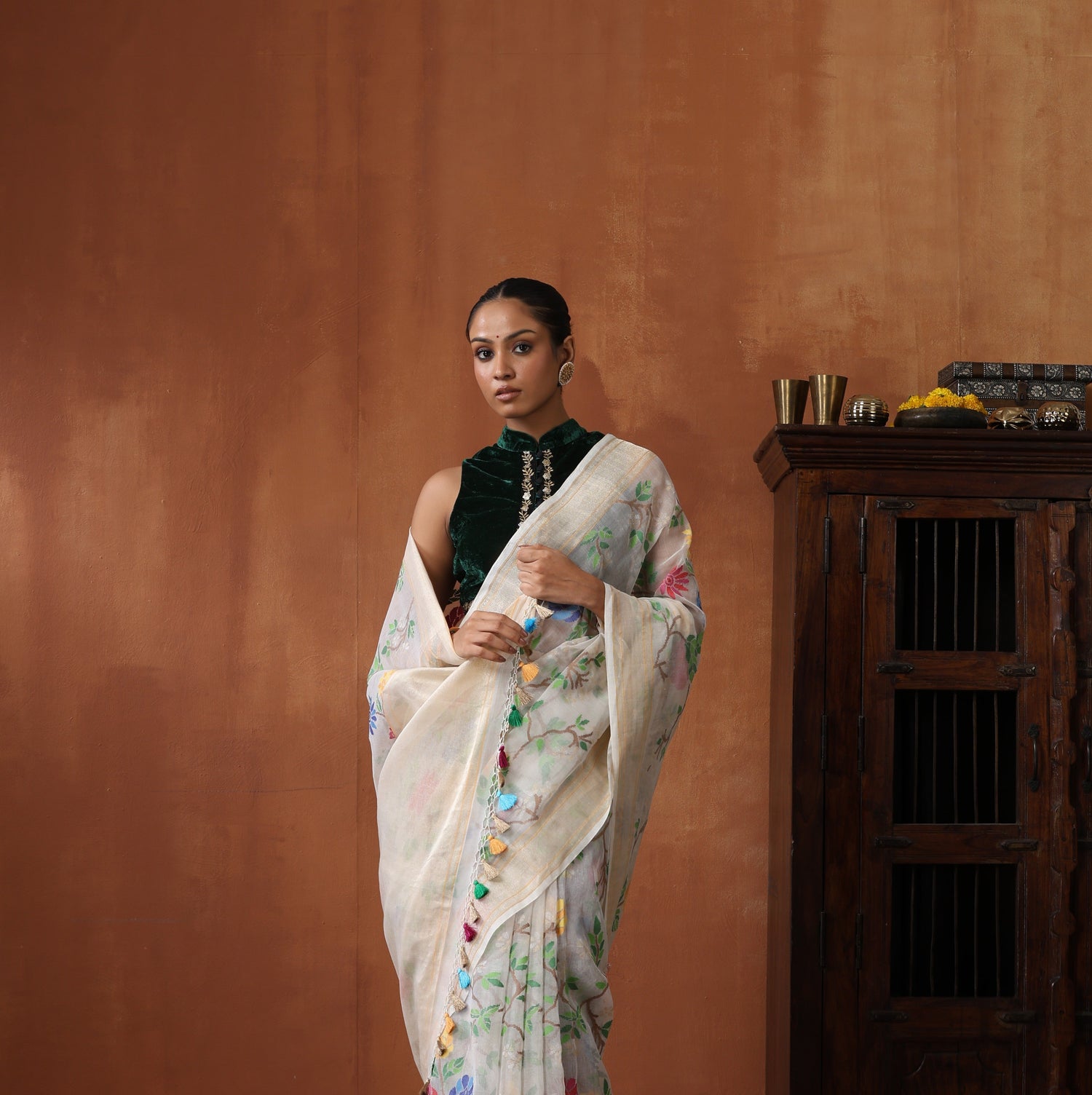Pashm: The finest fibre from Kashmir
Kashmir, A ‘paradise on Earth’, is adorned with magnificent Chinar trees that colour the entire valley amber and scarlet in the autumn, silver lakes that turn golden at the break of dawn, and crystal blue rivers that flow from the sublime cold mountains.
People form a place, and the modest and cheerful Kashmiri folks welcome you with enormous warmth, love, and togetherness as soon as you step foot on this gorgeous paradise.
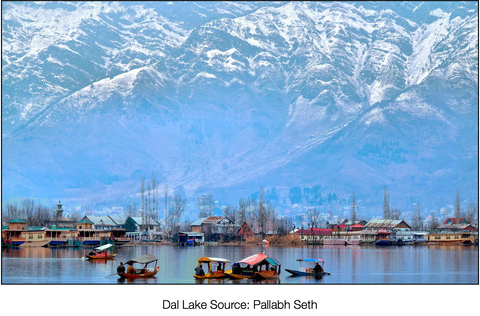
Pashma is a Persian word that originated in Kashmir. Pashmina is the fabric that is woven out of the pashma. Because of its warmth and lightness, this exquisite fibre fetches a more excellent price than all-natural fibres. In keeping with its royal status throughout history, it is noted for its refinement, warmth, softness, appealing artistic merit, and permanence in fashion. Pashmina Sarees and Pashmina shawls have retained their air of purity and sophistication over the years, making them one of the best luxuries even in the contemporary age.
Pashmina is the epitome of luxury fashion, and it’s no gimmick. Pure Kashmiri Pashmina sarees and shawls have patronage globally. The heavenly grandeur and delicate texture of pashmina, coupled with beautiful hand embroidery, grants the garment an everlasting regal status.
The History: A nonpareil tale
The history of pashmina shawls dates back centuries to Napoleon's days almost 200 years ago, when he gifted a pashmina shawl to Josephine. She was so enamoured with the mantle that she requested Napoleon to procure more so she could share it with her sophisticated society acquaintances. Pashmina remains an essential element of a trendy ensemble, and popular wedding and bridesmaid presents over two centuries of popularity, attesting to this traditional item's longevity and worldwide appeal.

History also tells that Pashmina shawls remained popular throughout the Mahabharata period, where monarchs and noble rulers favoured them. The skill of weaving Pashmina is at least 3000 years old. Previously, only the ruling elite or the wealthy could afford to wear Pashmina materials. Pashmina weaves drew Caesar's notice and were a favourite of the French queen, Marie Antoinette.
A sojourn: from Kashmir to our homes
Pashmina is a down fibre or undercoat obtained from the Changthangi Goat, Capra hircus, which is native to India and has a hilly environment in Central Asia. The distribution region extends from China through Tibet, Afghanistan, Mongolia, Russia, and Iran. Let me take you on tour to show how this fine variant of Cashmere fibre is transformed into the most exemplary garment the naked eye has ever seen.
With each artisan focusing on a specific task, they make one of the world's most exquisite and delicate textiles. The entire garment-making process consists of nine steps.

Harvesting: Pashmina is collected throughout the springtime when the goats naturally shed their undercoats. Since the fibre obtained is blended with coarse outer coat hair known as guard hair, the entire batch of wool must be refined.
Sorting: Also known as (Puch-Nawun), Sorting is the process of separating the undercoat fibre from the guarding hair. It is handled manually, usually by Kashmiri women.
Combing: Residues in raw pashmina are eliminated via combing. Traditionally, the raw fibre is impaled continuously on an upright comb while combing. This is repeated until the Tuft visible is clean enough to spin. When machine dehairing is implemented, the process of combing is omitted.
Glueing: It is the application of adhering substance to the resulting fibre. This is accomplished by using pounded rice. The fibre is placed in a jar with pounded powered rice (Kharioat) and kept for a couple of nights. This is done to provide the fibre with additional strength, suppleness, and softness. Later, the fibre is combed again to remove any remnants of the crushed rice power. The cleaned Fiber is now shaped into a patty known locally as Thumb.
Spinning: Spinning is the process of converting untwisted strands of fibre into the yarn count and twits needed for subsequent processing. Spinning is traditionally done on a hand-operated spinning wheel known as a Yander or Charkha. In this procedure, a little tuft/thumb of the valuable fibre is placed between both the second and third fingers of the left hand, supported by the thumb. The spinner lifts and descends the hand with the fibre in perfect sync with the rotating wheel as she rotates the wheel with her right hand. The yarn is spun on a light holder known locally as a Phumblet. The yarns are then turned into hanks on a wooden reeler known locally as a Yarandul.
Dying: If the cloth has to be dyed, it is delivered to the dyer, who colours it according to demand and specifications. The dyes include only natural components and generate diverse colours depending upon the concentration utilised.
Weaving: While looms in India can hold thread for up to 60 metres of fabric, the little looms in Kashmir can only store yarn for about 12 metres of pashmina fabric. This is due to the fact that fibre is far more precious than the kinds of cotton, and silks are woven in other parts of the nation. Here, production is done on a considerably smaller scale.

The procedure begins with the opening of hanks on a big wooden platform known locally as Thanjoor, which is fixed on a hardwood spindle known as prech. Before weaving, the yarn is sorted and weighed. Weavers sift the yarn for producing wraps, and two people work together to move the yarn from perch to iron rods using sticks. Yanun is the name given to this technique. Approximately 1200 strands are stretched in this fashion to make a wrap known locally as Yaen, which is sufficient for 4 to 6 shawls. The loom is made of wood and has a bench comfortably seating two persons. Thaan is the completed length of woven material.
Finishing: The cloth is now cleaned in flowing water by a dobhi who repeatedly strikes it against a hard flat surface or stone. The fabric is rubbed with Kasher, a dried wiry core of gourd, bitter gourd, or maize cob. The cleaned fibre is now delivered to the purzgar. The cloth is tweezed, trimmed, or brushed to remove any surface flaws.
Stretching: The cloth is rolled and stretched for many days and is ironed, wrapped, and sent to the vendor. It is either a simple shawl or a shawl with numerous traditional Kashmiri Embroideries before the finished product reaches the customers.
Pashmina Shawls and Sarees: A perpetual form of luxury
A classic extravagance that has long served as a mark of elegance and status for the aristocracy. Pashmina Shawls and sarees come in various. You may be unaware that there are several choices for adorning your wardrobe with this piece of elegance. We've listed the numerous varieties of Pashminas shawls and saree designs for you to consider.
Plain Pashmina: It is a simple yet adaptable and fashionable form of Pashmina. Solid colours provide the most attractive unisex statement. Solid Pashminas are by far the most popular since they go with every outfit and are a very minimalist luxury, and they are also less expensive than others. This is a pure pashmina shawl with Ikkat print.

Sozni Embroidered Pashmina: The Sozni embroidered Pashmina is the most magnificent form of Pashmina. Sozni is a form of Kashmiri embroidery done manually with a needle. A magnificent solid Pashmina is given over to the Sozni Karigar, who first traces the design on the shawl before casting the complex needlework over the pattern with a needle. Depending on the quantity of stitching required, a sozni pashmina shawl might take months or years to complete.
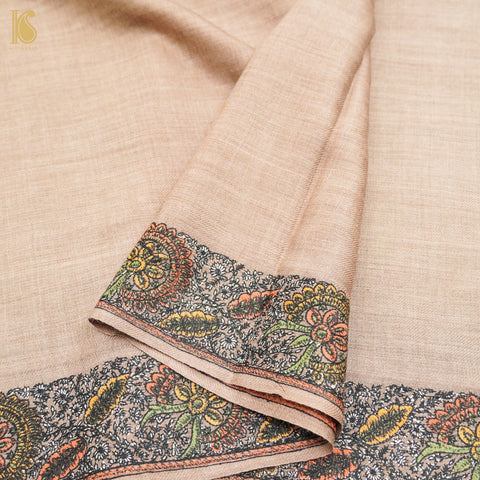
Kani Pashmina: The Kani Pashmina is maybe the most gorgeous kind of Pashmina. It is braided with little wooden sticks called Kanis.

Tilla Embroidery Pashmina: Tilla Embroidery is a traditional Kashmiri technique that entails embroidering with silver or gold threads. The embroidery is now done using gold and silver-plated metallic threads to make it more inexpensive. Tilla Pashmina is an essential element of the bridal trousseau. This black Tilla Embroidery Shawl took 1 year to complete.

Contemporary Pashmina: Pashmina styles evolve throughout time, keeping the latest fashion trends in mind. Contemporary Pashmina is all about modernisation while remaining anchored in heritage and traditions. Below is image of sozni kani weave with zari weave.

Conclusion
Pashmina shawls and sarees, with their simple eloquence, exquisitely crafted designs, and unrivaled warmth, continually remind us of the grandeur of the Kashmiri culture. Pashmina wraps are still one of the most prized things in the closets of folks who live a classy lifestyle.


